By the healthiergang writer , medical student.
Oblique abdominals
The oblique abdominal muscles are 2 distinct muscle bundles located on either side of the abdomen. The external oblique muscles and the internal oblique muscles can be distinguished.
They are postural muscles and are part of the core or (in an extended sense) all the muscles that take part in maintaining the stability of the thoracic spine. It is important to understand the anatomy of these 2 muscles in order to better understand what functions they perform, their importance and finally develop them to the fullest.
It should be emphasized that the fundamental prerequisite for having a sculpted abdomen is not to have a layer of fat that covers it.
Follow Giulia's workout routine:
External oblique
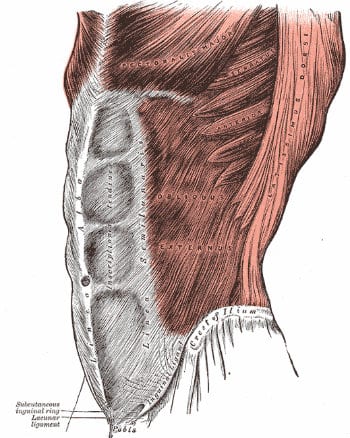 The external oblique muscle is one of the muscles that helps to form the abdominal wall. As the name implies, it is the superficial muscle bundle and is also the largest of the abdominal muscles.
The external oblique muscle is one of the muscles that helps to form the abdominal wall. As the name implies, it is the superficial muscle bundle and is also the largest of the abdominal muscles.
It originates from the last ribs, inserting itself at the top on the xiphoid process, and then developing, spreading like a fan downwards, inserting itself on the iliac crest, on the iliac bone and on the pubic tubercle. It also exhausts medially helping to form the linea alba. By contracting, it performs an action on the abdominal wall and on the thoracic cage, it also participates in the respiratory dynamics.
Internal oblique
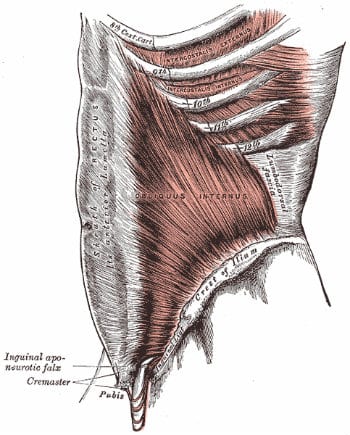 The internal oblique muscle also contributes to forming the abdominal wall. As the name implies, it is not a superficial muscle but is located just below its external namesake. It has an insertion opposite to that of the external oblique: it originates from the bottom, precisely from the inguinal ligament, the iliac crest and the lumbosacral fascia.
The internal oblique muscle also contributes to forming the abdominal wall. As the name implies, it is not a superficial muscle but is located just below its external namesake. It has an insertion opposite to that of the external oblique: it originates from the bottom, precisely from the inguinal ligament, the iliac crest and the lumbosacral fascia.
It widens like a fan going up to then enter the last ribs. Medially it is exhausted by meeting the rectus abdominis and contributing to the formation of the linea alba. Its contraction, as for the external oblique, affects the abdominal wall and the rib cage and also contributes to the respiratory dynamics.
From what has just been described, it can be seen that the external oblique has muscle fibers that slide from top to bottom with a slightly inclined direction. On the contrary, the internal oblique originates from the pelvic area and then inserts itself superiorly on the ribs. The direction of the fibers of this internal muscle is practically perpendicular to those of its counterpart.
The two oblique muscles also play an important role in the formation of the linea alba, concretely contributing to the abdominal drawing. They are also essential for trunk and rib cage stability.
How to train them
In abdominal section training the oblique muscles often do not receive the due attention which is captured more by the rectus abdominis. This is a big mistake if you want to develop a slim profile and a flat, defined abdomen. The obliques with their perpendicular beams envelop the abdominal area and, if properly trained, ensure that the lower abdomen does not protrude giving the appearance of a swollen abdomen.
The muscles of the whole abdomen have a small capacity to hypertrophy and therefore training these will not cause your image to become ugly. On the contrary, they will contribute to a better posture and a slim and compact pelvis.
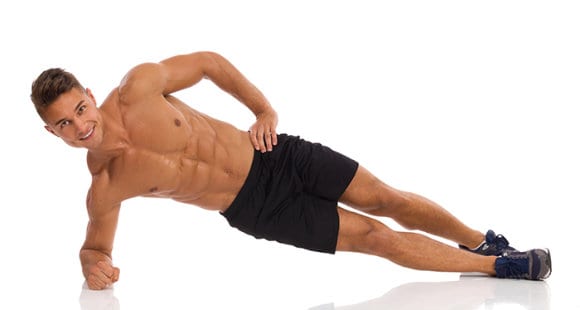
Being postural muscles, both the external and internal oblique muscles are resistant to fatigue but also with the presence of different fibers capable of expressing rapid and explosive movements. The abdominal muscle training techniques are varied and each has its own reasons. I think that in this case, however, the results are worth more than the hypotheses.
I will therefore propose the WAY IN WHICH I train these muscles. This training method does not necessarily have to be effective for everyone but, until now, it has worked with all the people I have proposed it to.
Opting for high repetitions with low intensity exercises I find boring, ineffective and requires a great deal of time. It is more useful to choose difficult exercises in which several muscles are involved together and to do a few repetitions focusing more on the quality than the quantity of these. Being postural muscles, the obliques can be stimulated with a fairly high frequency.
The Best Exercises
Below I propose a routine that can also be practiced every day of the week in a separate session, at the beginning of training or at the end of this session. Personally I prefer to dedicate less than ten minutes before dinner to this "mini-workout".
1. Abdominals on the bar with torso rotation
Cling to a bar, contract your abs and exhale flex your pelvis until you bring your feet towards one end of the bar. In the position of maximum contraction try to contract the muscle. 4 series of max repetitions.
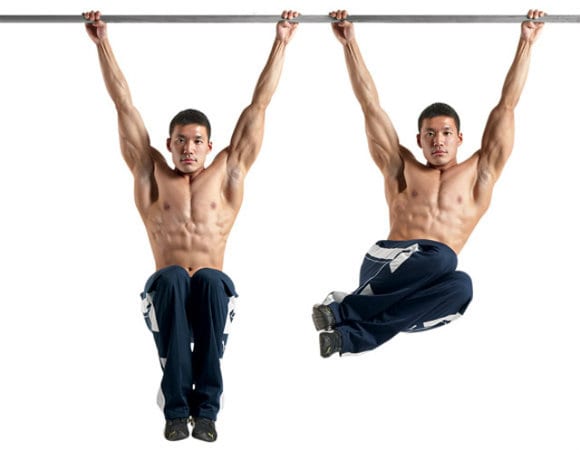
2. Isometric oblique plank
Focus on keeping the torso rigid, lowering the rib cage and contracting the oblique muscles. Take deep breaths and full exhalations. 1 set per side of 2 minutes each.
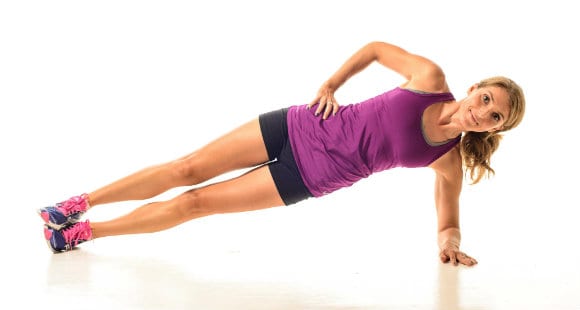
It is a simple and effective routine. The secret of success is commitment and perseverance.
Good workout!


























